Topic scoreboard for bowling: Discover the exciting world of bowling scoreboards, where every pin counts! This guide dives into the intricacies of scorekeeping, enhancing your bowling experience whether you"re a beginner or a seasoned pro.
Table of Content
- How do I keep score or adjust a score on a bowling scoreboard?
- Overview of Bowling Scoreboards
- YOUTUBE: Scoring Bowling
- Essential Bowling Rules and Frame Structure
- Scoring Basics: Strikes, Spares, and Open Frames
- Advanced Scoring Techniques: Calculating Bonus Points
- Explanation of the 10th Frame: Special Rules and Scenarios
- Utilizing Bowling Score Calculators: Features and Advantages
- Modern Scorekeeping: Bowling Score Apps and Software
- Interactive Scoreboards: Understanding the Visual Elements
- Practical Examples: Common Scoring Situations Explained
- Improving Your Game: Tracking Progress and Analytics
How do I keep score or adjust a score on a bowling scoreboard?
To keep score or adjust a score on a bowling scoreboard, follow these steps:
- Start by assigning a numerical value to each pin that is knocked down. For example, you can use 1 for each pin.
- Track each player\'s score in individual frames. Each frame consists of two rolls for most players, but it can be more if a strike or spare is achieved.
- In each frame, add up the total number of pins knocked down in the two rolls and record it as the frame score.
- If a player knocks down all 10 pins in one roll, it is considered a strike. Record an \"X\" in the frame score column for that frame.
- If a player knocks down all remaining pins in the second roll of a frame, it is considered a spare. Record a \"/\" in the frame score column for that frame.
- When calculating the score for a strike, add the next two rolls\' values to the strike frame. For example, if the next two rolls are 5 and 3, add 8 to the strike frame.
- When calculating the score for a spare, add the value of the next roll to the spare frame. For example, if the next roll is 6, add 6 to the spare frame.
- Continue calculating the scores for each frame, keeping in mind the rules for strikes and spares.
- At the end of the game, add up all the frame scores to get the final score for each player.
By following these steps, you can keep score or adjust a score on a bowling scoreboard.
READ MORE:
Overview of Bowling Scoreboards
Bowling scoreboards are essential tools in the sport of ten-pin bowling, providing a clear and concise record of players\" performances during a game. These scoreboards range from traditional manual systems to advanced digital displays, each designed to track scores and frame progress efficiently.
- Manual Scoreboards: These are traditional scoreboards where scores are recorded manually, often on a paper sheet or a whiteboard. They require an understanding of bowling scoring rules but offer a hands-on approach.
- Digital Scoreboards: These electronic systems automatically calculate and display scores, typically found in modern bowling alleys. They offer various features like animations, player names, and frame-by-frame scoring.
- Mobile and Web Applications: With advancements in technology, there are now apps and online tools that allow bowlers to keep track of their scores on their devices, offering convenience and portable scorekeeping.
Understanding how to read and interpret a bowling scoreboard is crucial for players. A standard scoreboard displays each player\"s name, frames (usually ten in a game), and scores for each frame. It also indicates special scoring like strikes (X), spares (/), and misses (-).
| Frame | 1 | 2 | ... | 10 |
| Player 1 | Score | Score | ... | Score |
| Player 2 | Score | Score | ... | Score |
Bowling scoreboards not only track current game scores but also help players analyze their performance, strategize, and improve their skills over time. The ability to interpret a scoreboard effectively enhances the overall bowling experience.
Scoring Bowling
\"Looking to add some fun and excitement to your evenings? Check out our amazing video on bowling techniques and strategies that will surely improve your game and help you score those strikes!\"
ScoreMore - A Bowling Scoring system
\"Tired of feeling stuck with your current performance? Discover our mind-blowing video on how to ScoreMore in any activity you\'re passionate about. Unleash your full potential and start achieving your goals today!\"
Essential Bowling Rules and Frame Structure
Understanding the essential rules and frame structure is key to mastering the game of bowling and interpreting the scoreboard effectively. Here\"s a breakdown of the fundamental aspects of bowling:
- Basic Gameplay: Bowling is typically played in a bowling alley with ten pins arranged at the end of a lane. The objective is to knock down as many pins as possible using a bowling ball.
- Frames: A standard game consists of ten frames. In each frame, a player has two chances to roll the ball and knock down the pins.
- Strikes and Spares:
- A strike is scored when all ten pins are knocked down with the first ball. It\"s marked as an \"X\" on the scoreboard.
- A spare is scored when all ten pins are knocked down with two balls. It\"s marked as a \"/\" on the scoreboard.
- The Tenth Frame: The tenth frame has a unique rule where a player can bowl up to three times if they score a strike or spare.
- Scoring: The score for a frame is the total number of pins knocked down, plus bonuses for strikes and spares.
- Bonus Points:
- For a strike, the next two rolls\" pin count is added as a bonus.
- For a spare, the next roll\"s pin count is added as a bonus.
It\"s important for players to understand these rules to maximize their scoring potential and develop strategies for the game. The scoreboard reflects these rules, showing each player\"s progress through the frames, along with their cumulative score.
This section forms the basis of understanding how scores are recorded and calculated in the game of bowling, essential for both beginners and experienced players.
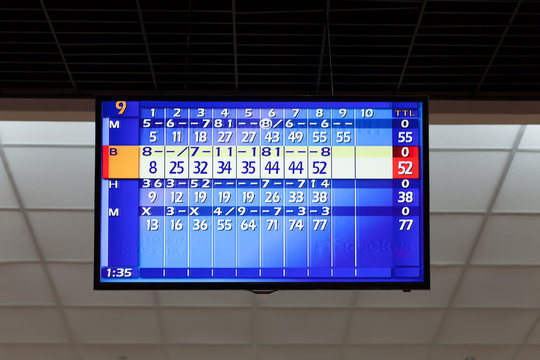
Scoring Basics: Strikes, Spares, and Open Frames
Scoring in bowling is unique and comprises several elements, including strikes, spares, and open frames. These scoring methods are key to understanding how a player\"s total score is calculated.
- Strike: A strike is achieved when all ten pins are knocked down with the first ball in a frame. It\"s marked as an \"X\" on the scoreboard. The score for a strike is 10 points plus the total of the pins knocked down in the next two rolls.
- Spare: A spare occurs when all ten pins are knocked down with both balls in a frame. It\"s denoted by a \"/\" on the scoreboard. The score for a spare is 10 points plus the number of pins knocked down in the next roll.
- Open Frame: An open frame happens when some pins remain standing after both balls in a frame. The score for an open frame is simply the total number of pins knocked down in that frame.
These basic scoring rules are crucial for players to understand how their actions during each frame contribute to their overall game score. The scoreboard visually represents these scores, allowing players to track their performance throughout the game.
| Frame | 1 | 2 | 3 | ... | 10 |
| Player\"s Score | X | 9 / | 7 2 | ... | X X X |
This scoring system adds depth to the game of bowling, making strategy and skill crucial for achieving high scores. Whether you\"re a beginner or a seasoned bowler, understanding these basics is essential for enjoying and succeeding in the sport.



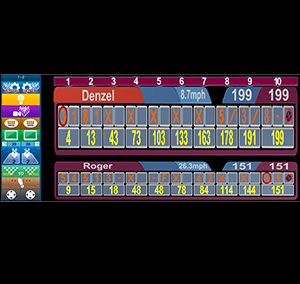
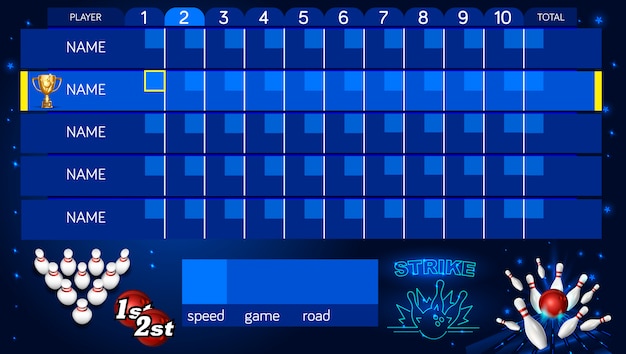

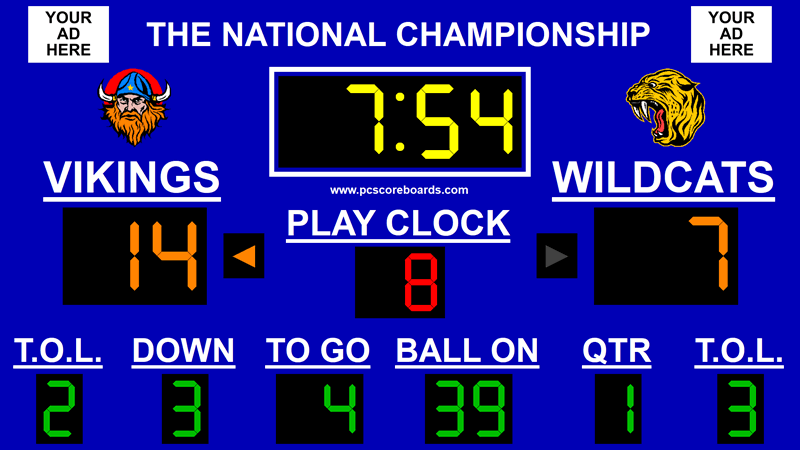


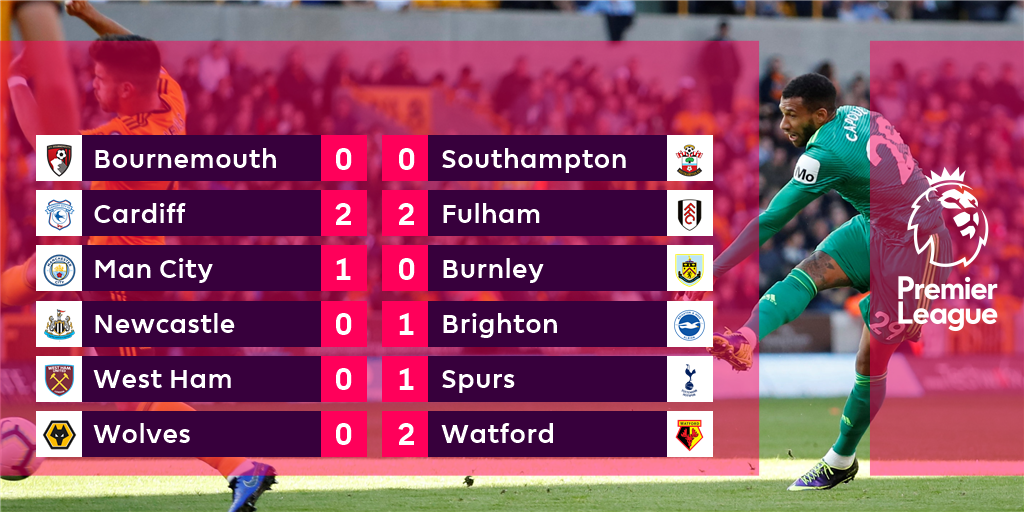








/origin-imgresizer.eurosport.com/2023/09/21/3789745-77084828-2560-1440.jpg)



